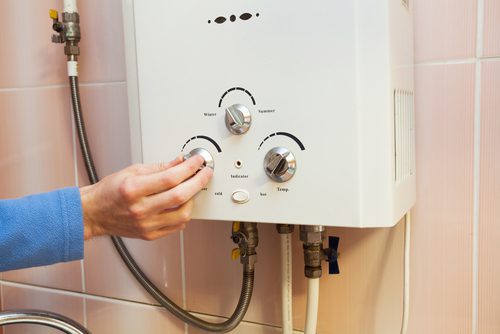Straightforward Methods to Care for Your Home's Hot Water System Effectively
Straightforward Methods to Care for Your Home's Hot Water System Effectively
Blog Article
What're your ideas on What Kind of Maintenance Do Water Heaters Need??

Warm water is vital for daily convenience, whether it's for a rejuvenating shower or washing recipes. To ensure your warm water system runs efficiently and lasts much longer, regular upkeep is crucial. This article gives functional tips and understandings on exactly how to preserve your home's hot water system to avoid disturbances and costly fixings.
Intro
Maintaining your home's warm water system might appear challenging, yet with a few easy actions, you can ensure it runs smoothly for several years to come. This overview covers everything from recognizing your hot water system to do it yourself maintenance ideas and knowing when to employ professional assistance.
Value of Keeping Your Hot Water System
Normal upkeep not only expands the lifespan of your hot water system but likewise guarantees it operates effectively. Disregarding maintenance can cause decreased performance, greater energy expenses, and even early failing of the system.
Signs Your Warm Water System Needs Upkeep
Recognizing when your hot water system needs interest can protect against major concerns. Look out for signs such as irregular water temperature level, unusual sounds from the heater, or rusty water.
Comprehending Your Warm Water System
Prior to diving right into maintenance tasks, it's valuable to recognize the fundamental elements of your warm water system. Commonly, this includes the water heater itself, pipes, anode rods, and temperature controls.
Monthly Maintenance Tasks
Regular monthly checks can assist catch minor problems prior to they intensify.
Purging the Hot Water Heater
Purging your hot water heater gets rid of debris buildup, improving performance and lengthening its life.
Monitoring and Changing Anode Rods
Anode poles protect against deterioration inside the container. Evaluating and replacing them when worn is important.
Checking and Changing Temperature Settings
Adjusting the temperature settings guarantees ideal performance and safety.
DIY Tips for Upkeep
You can execute numerous maintenance tasks on your own to maintain your hot water system in top condition.
Checking for Leakages
On a regular basis examine pipes and connections for leakages, as these can bring about water damages and higher costs.
Checking Stress Alleviation Valves
Testing the stress safety valve guarantees it functions correctly and avoids excessive pressure build-up.
Insulating Pipelines
Shielding warm water pipes decreases heat loss and can conserve energy.
When to Call a Specialist
While do it yourself upkeep is helpful, some problems require professional proficiency.
Facility Concerns Needing Professional Aid
Instances include significant leakages, electric problems, or if your hot water heater is constantly underperforming.
Routine Professional Upkeep Advantages
Expert upkeep can consist of comprehensive inspections, tune-ups, and making certain compliance with safety and security requirements.
Final thought
Regular upkeep of your home's hot water system is crucial for effectiveness, longevity, and expense savings. By adhering to these ideas and knowing when to look for professional assistance, you can ensure a trusted supply of hot water without unexpected disturbances.
How to Maintain an Instant Hot Water Heater
Before tinkering with your hot water heater, make sure that it’s not powered on. You also have to turn off the main circuit breaker and shut off the main gas line to prevent accidents. Also turn off the water valves connected to your unit to prevent water from flowing into and out of the appliance. 2. When you’re done, you have to detach the purge valves’ caps. These look like the letter “T†and are situated on either side of the water valves. Doing so will release any pressure that has accumulated inside the valves while at the same time avoid hot water from shooting out and burning your skin. 3. When the purge valves’ caps are removed, you have to connect your hosing lines to the valves. Your unit should have come with three hoses but if it didn’t, you can purchase these things from any hardware or home repair shops. You can also get them from retail stores that sell water heating systems. Read the user’s manual and follow it to complete this task properly. When the hosing lines are connected, open the purge port’s valves. 4. You should never use harsh chemical cleaners or solutions when cleaning your unit. Make use of white vinegar instead. It should be undiluted and you’ll probably use about 2 gallons. 5. Now flush your water heater. This task should probably take about 40 minutes. We can’t give you specific directions for this because the procedure is carried out depending on the type, model and brand of your heater. With that being said, refer to the user’s manual. 6. When you’re done draining the unit, you have to turn off the purge port valves again. Remove the hosing lines that you earlier installed on each of the water valves. Put the valve caps (purge port) back in their respective places and be very careful so as not to damage the rubber discs that are found inside these caps. 7. Now that everything’s back in place, check your user’s manual again to find out how to reactivate your water heating system. 8. Once it is working, turn one of your hot water faucets on just to let air pass through the heater’s water supply pipes. Leave the tap on until water flows smoothly out of it. https://www.orrplumbing.com/blog/2014/september/how-to-maintain-an-instant-hot-water-heater/

As an avid person who reads about How to Maintain a Hot Water Heater in a Few Simple Steps, I was thinking sharing that information was worthwhile. In case you enjoyed reading our article please be sure to pass it around. We value your readership.
Set An Appointment Report this page